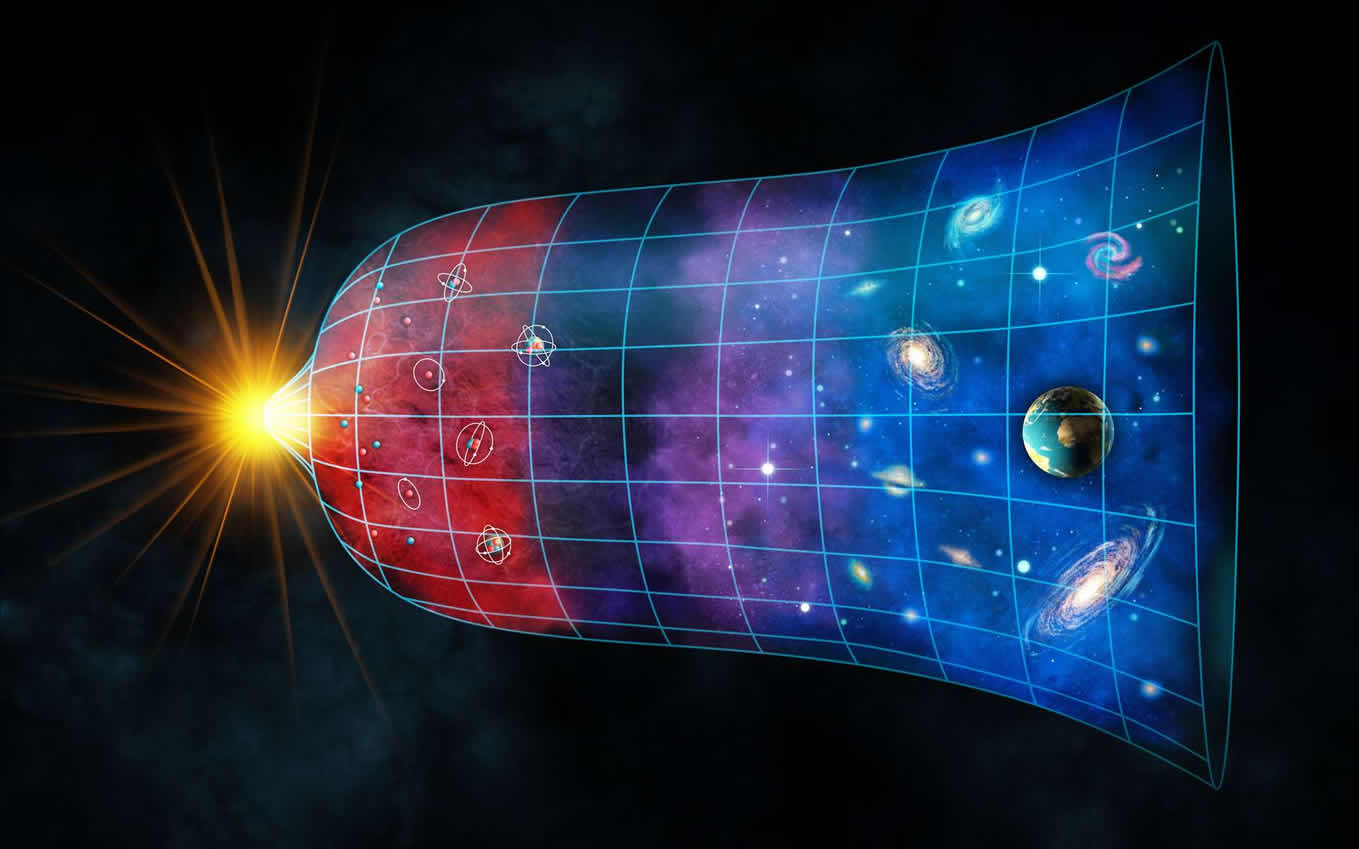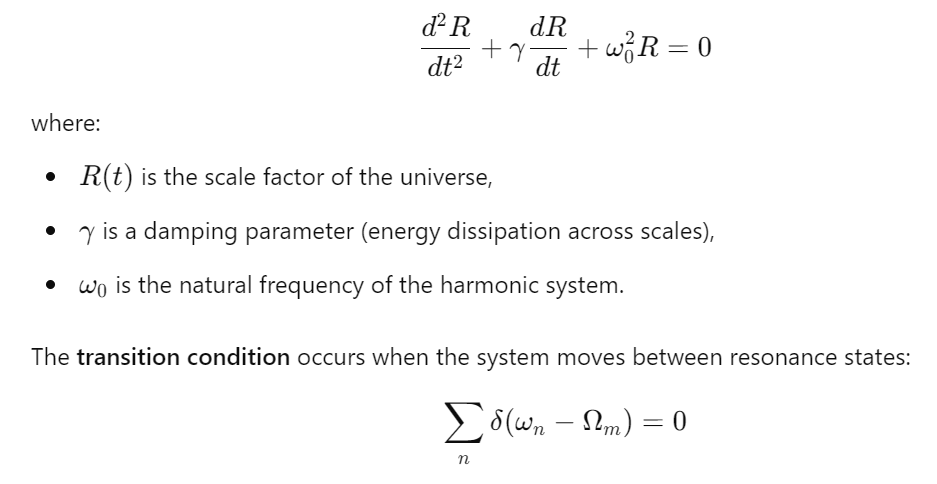
The expansion of the universe is one of the most profound mysteries in cosmology. Traditional models describe inflation as an exponential expansion followed by a slower phase of cosmic evolution. However, in the Grand Containment (GC) framework, this process is not a one-time event but a dynamic oscillation governed by harmonic resonance principles.
The Inflation-Deflation Transition (IDT) in the GC model suggests that cosmic expansion and contraction are not separate phenomena but rather part of a synchronized harmonic process driven by multiscale resonances.
Instead of viewing inflation and deflation as distinct phases, we propose that they form a continuum of oscillatory behavior:
🔹 Inflation (Expansion Phase):
🔹 Deflation (Contraction Phase):
Thus, cosmic expansion follows a structured oscillatory model, where each cycle is linked to the previous state through harmonic synchronization.
A simplified model of inflation-deflation dynamics can be represented as:

This equation describes a moment of harmonic cancellation, marking a shift between inflationary and deflationary states.
Using 3D computational models, the inflation-deflation process was tested under harmonic conditions. Key findings include:
✔️ Inflation follows a predictable harmonic amplification rather than a chaotic expansion.
✔️ Deflation does not imply collapse, but a reconfiguration of harmonic energy.
✔️ The IDT process maintains a quasi-stable oscillation state, preventing extreme singularities.
✔️ Resonance peaks define the transition between rapid expansion and stabilization.
The simulations was developed using advanced AI tools from ChatGPT, applying the principles of Multidimensional Harmonic Mathematics (MAM).
🔹 The most surprising result:
Instead of an uncontrolled runaway expansion, the transition appears to be finely tuned by frequency modulations in the GC framework.